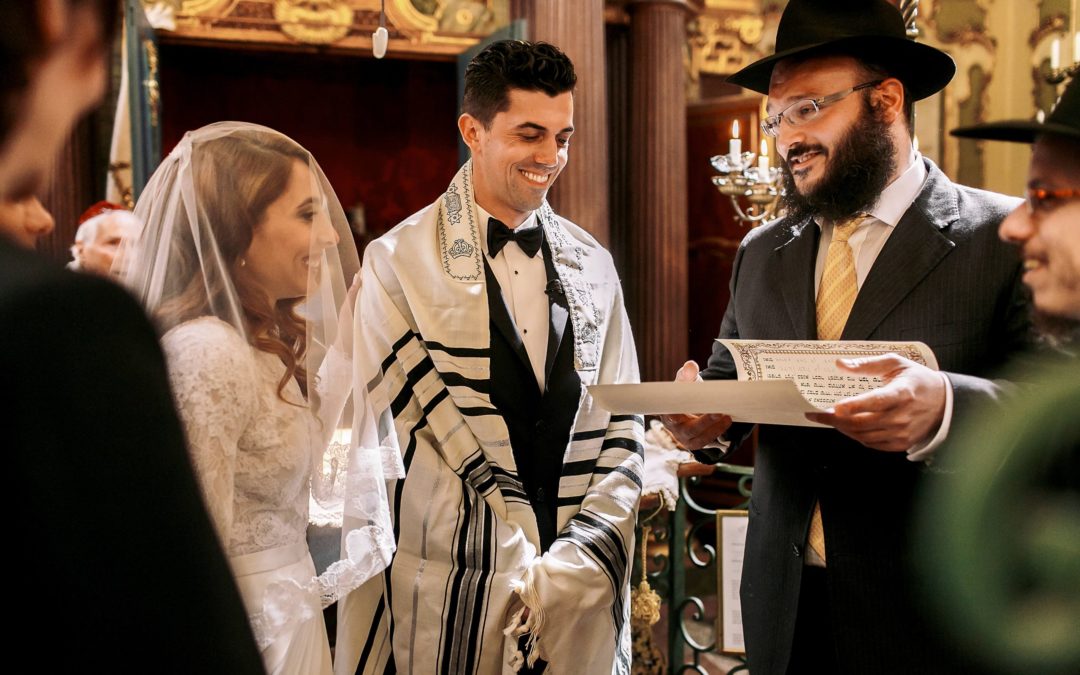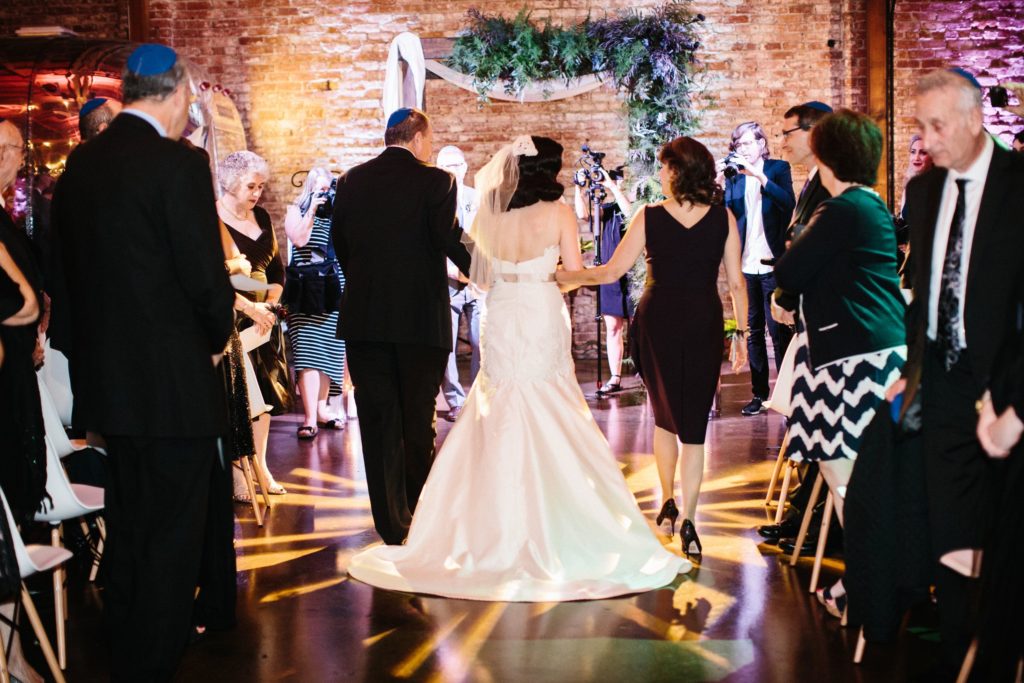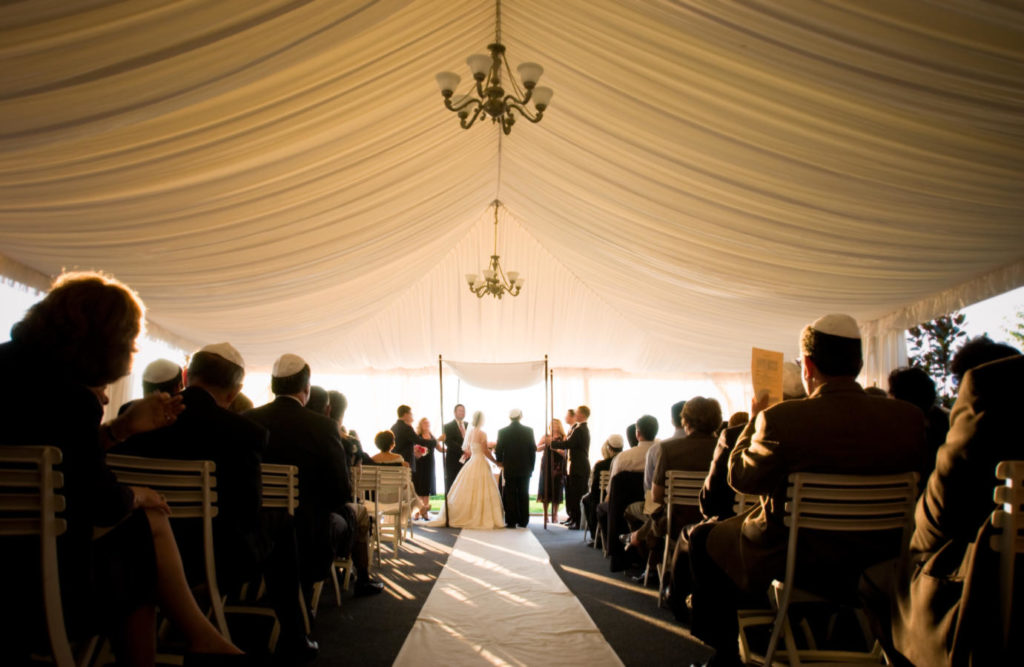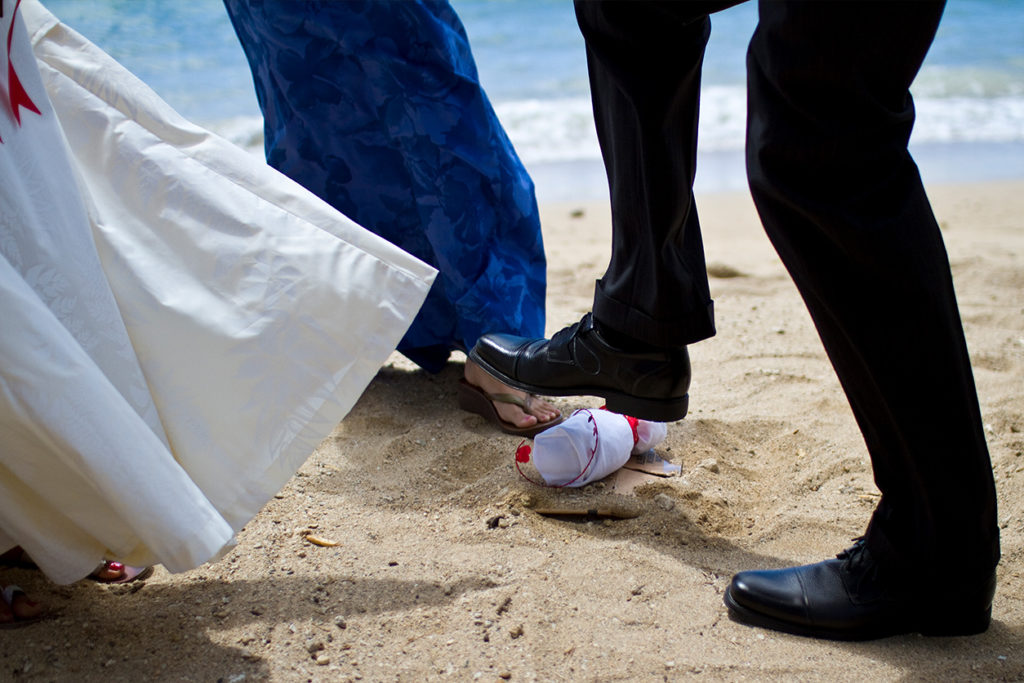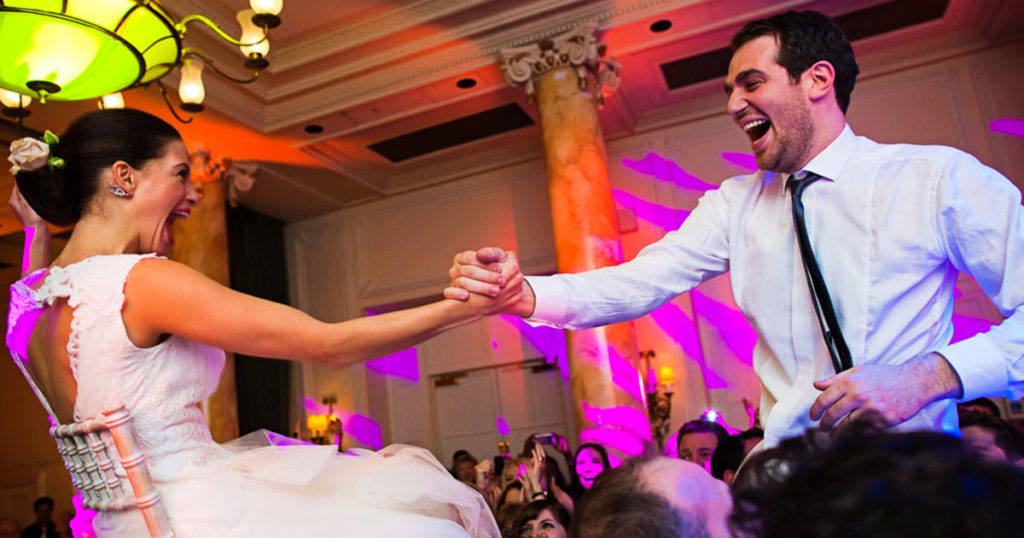Whether you are attending a traditional Jewish wedding for the first time or marrying into a Jewish family, there are some traditional Jewish wedding traditions that are good for you to know. By understanding these customs, you will hold a better appreciation for them when the time comes, which is the best thing your Jewish loved one could ask for.
The Chuppah
The chuppah is a structure with four corners and a covered roof that symbolize the new home the bride and groom build together. The canopy above them is made of tallit, which is a prayer shawl that usually belongs to the couple or someone in the family. In some ceremonies the chuppah is held up by friends and family throughout the ceremony as a symbol of support, but in many it is simply a free standing structure.
Walking down the aisle
The processional order is slightly different from other religions during a traditional Jewish wedding. Both of the groom’s parents walk him down the aisle to the chuppah, followed by the bride and her parents. Usually, both parents remain standing under the chuppah alongside their children throughout the ceremony.
Breaking the glass
Perhaps the most well-known aspect of traditional Jewish weddings, the breaking of the glass holds many symbolic meanings. Some say it represents that marriage holds hard times as well as joy, and it is a reminder to stand by one another even then. Others say it represents the destruction of the Temple in Jerusalem. The groom steps on a glass inside a cloth bag to shatter it, which is then collected for the couple to do with as they please.
Hora and Mezinke
There are a few dances guests are invited to partake in during Jewish weddings. The hora involves guests dancing in circles (often separated by men and women) that surround the bride and groom. The couple is then lifted into the air on chairs while holding onto a handkerchief or cloth napkin. The mezinke is a special dance between parents of the bride or groom when their last child is married.
